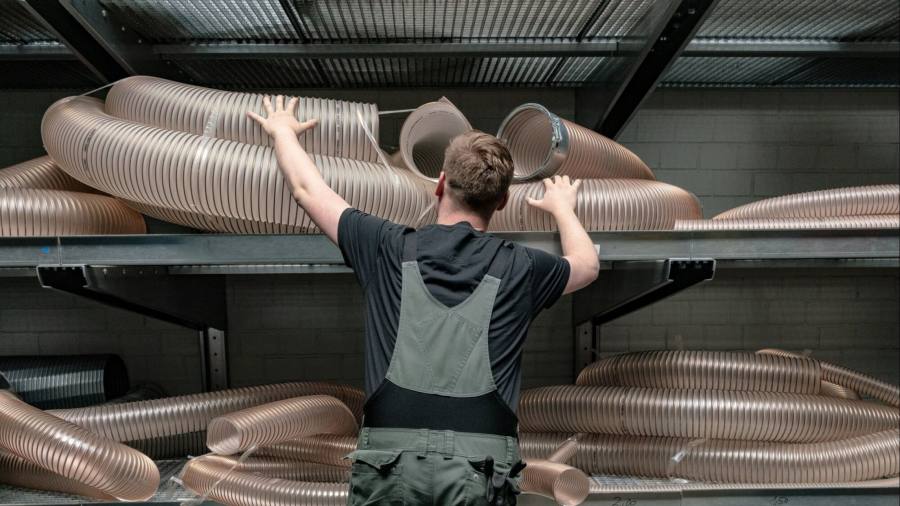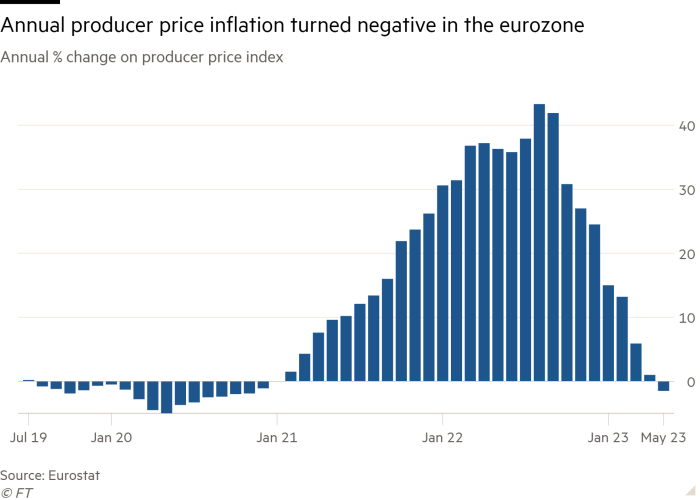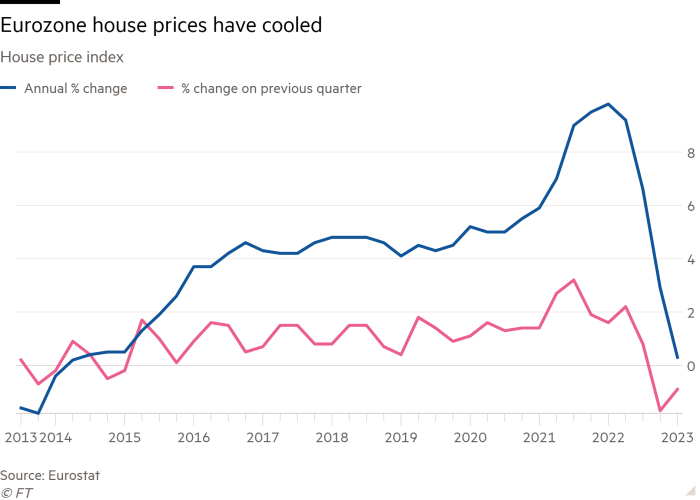
Receive free Eurozone inflation updates
We’ll send you a myFT Daily Digest email rounding up the latest Eurozone inflation news every morning.
A key measure of eurozone inflation has fallen into negative territory for the first time in two and a half years, in a further sign that the surge in prices that has plagued businesses and households is now in retreat.
The EU’s statistics office, Eurostat, said factory gate prices in the region fell 1.5 per cent in the year to May, the first outright decline since December 2020.
The measure has fallen significantly since the summer, when annual price rises hit a peak of 43.3 per cent in August after energy costs surged in the wake of Russia’s full-scale invasion of Ukraine.
The decline will raise hopes that a series of rate rises by the European Central Bank is finally beginning to pay off.
Central bank figures out on Wednesday showed households increasingly expect inflation to fall sharply over the coming year, a trend that Andrzej Szczepaniak, an economist at Nomura, described as “exactly what the ECB will have been looking for”.

However, consumer price inflation remains well above the ECB’s 2 per cent target at 5.5 per cent in the year to June. At 5.4 per cent, the core consumer prices are close to record highs.
Higher borrowing costs are also weighing on activity in the region’s housing market. Separate data published by Eurostat on Wednesday showed house prices fell for the second quarter in a row — though by a smaller amount in the three months to March than in the final quarter of 2022.
Average mortgage rates across the eurozone now stand at 3.58 per cent, up from 1.78 per cent a year ago, according to ECB figures. The central bank has raised its benchmark deposit rate by 4 percentage points to 3.5 per cent over the past year.
A breakdown of producer prices showed energy costs were down 13.3 per cent compared with May last year. Factory gate prices charged on intermediate goods, such as parts of machinery, also contracted.
Producer prices were down 1.9 per cent between April and May, with all EU countries except Malta reporting a contraction.
Eurozone house prices fell 0.9 per cent in the first quarter compared with the previous three months, following a 1.7 per cent contraction in the previous quarter. That marked the first two consecutive contractions in almost a decade.

Households’ expectations for inflation over the next 12 months decreased to 3.9 per cent in May, from 4.1 per cent in April, according to the ECB’s quarterly poll. The fall in inflation expectations to the lowest level since last March “nicely illustrate that the disinflationary process in the eurozone is gaining momentum”, said Carsten Brzeski, an economist at Dutch bank ING.
He added that it confirmed his view “that both headline and core inflation could fall faster towards the end of the year than the ECB currently thinks”.
Markets expect rate-setters to raise borrowing costs by a quarter point at the next two policy meetings in July and September.
In Germany, the region’s largest economy, prices have fallen 6.8 per cent. Sven Jari Stehn, economist at Goldman Sachs, said: “The drag from policy tightening via the housing market is likely to build.”